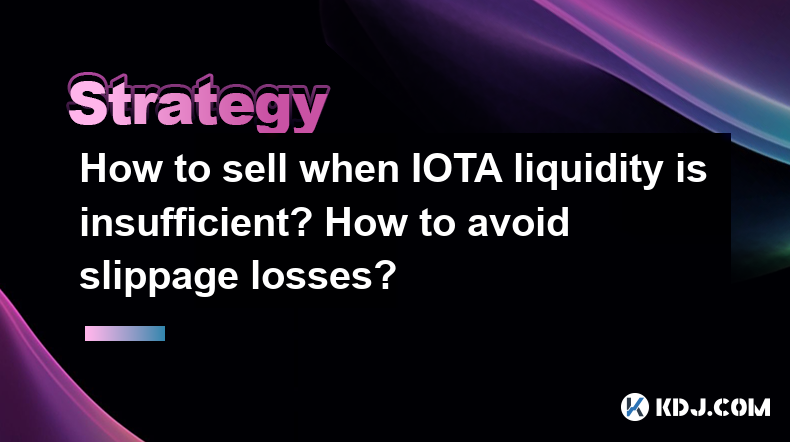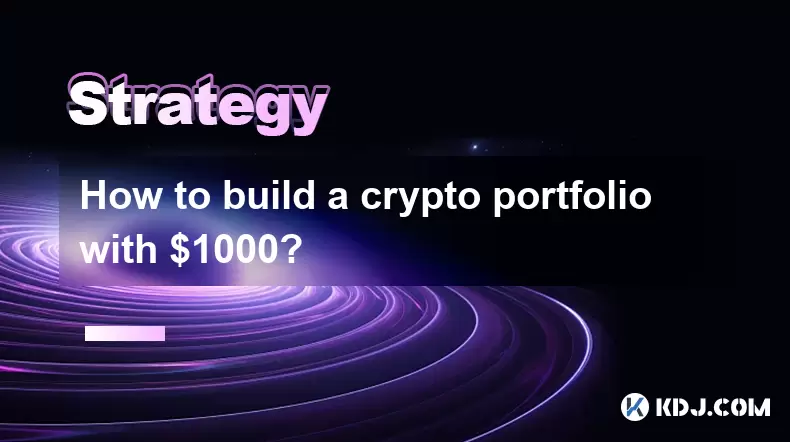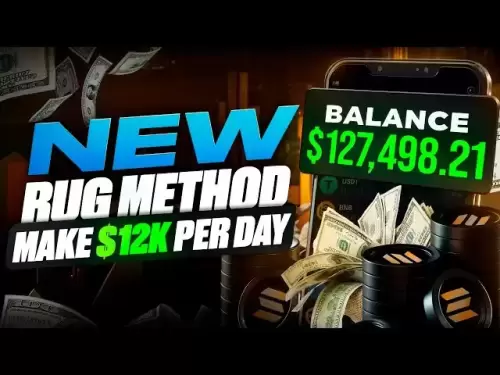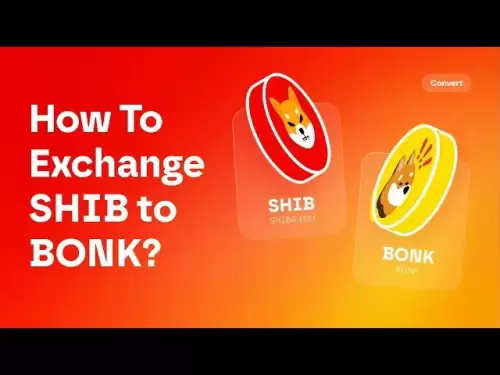-
 Bitcoin
Bitcoin $114000
0.14% -
 Ethereum
Ethereum $3493
-0.55% -
 XRP
XRP $2.877
-2.40% -
 Tether USDt
Tether USDt $1.000
0.04% -
 BNB
BNB $749.6
-1.00% -
 Solana
Solana $161.8
-1.73% -
 USDC
USDC $0.0000
0.01% -
 TRON
TRON $0.3261
-0.10% -
 Dogecoin
Dogecoin $0.1978
-1.14% -
 Cardano
Cardano $0.7237
1.01% -
 Hyperliquid
Hyperliquid $38.91
1.50% -
 Sui
Sui $3.466
1.01% -
 Stellar
Stellar $0.3856
0.86% -
 Chainlink
Chainlink $16.15
0.62% -
 Bitcoin Cash
Bitcoin Cash $538.9
0.49% -
 Hedera
Hedera $0.2436
2.25% -
 Ethena USDe
Ethena USDe $1.001
0.05% -
 Avalanche
Avalanche $21.36
-0.86% -
 Toncoin
Toncoin $3.661
2.11% -
 Litecoin
Litecoin $109.1
1.99% -
 UNUS SED LEO
UNUS SED LEO $8.964
0.01% -
 Shiba Inu
Shiba Inu $0.00001220
0.67% -
 Polkadot
Polkadot $3.604
1.10% -
 Uniswap
Uniswap $9.124
0.97% -
 Monero
Monero $297.4
1.31% -
 Dai
Dai $1.000
0.02% -
 Bitget Token
Bitget Token $4.311
0.35% -
 Pepe
Pepe $0.00001048
0.49% -
 Cronos
Cronos $0.1319
-0.50% -
 Aave
Aave $257.9
1.11%
How to sell when IOTA liquidity is insufficient? How to avoid slippage losses?
When selling IOTA during low liquidity, use major exchanges, break large orders into smaller chunks, and employ limit orders to minimize slippage and get better prices.
Apr 30, 2025 at 05:21 pm

Understanding IOTA Liquidity
When dealing with cryptocurrencies like IOTA, liquidity refers to how easily you can buy or sell the asset without affecting its market price significantly. Insufficient liquidity in IOTA can lead to challenges such as slippage, where the price at which your order is executed differs from the price you expected. This article will guide you through the process of selling IOTA when liquidity is low and strategies to minimize slippage losses.
Choosing the Right Trading Platform
Selecting a trading platform with adequate liquidity is crucial when dealing with IOTA. Major exchanges like Binance, Kraken, and Bitfinex typically offer better liquidity than smaller platforms. To find the best platform for selling IOTA:
- Research the trading volume of IOTA on different exchanges. Higher trading volumes usually indicate better liquidity.
- Check the order book to see the depth of buy and sell orders. A deep order book suggests more liquidity.
- Read user reviews and compare fees to ensure you're using a reputable and cost-effective platform.
Timing Your Sale
Timing your sale can significantly affect the liquidity you encounter. Here are some strategies to consider:
- Monitor market trends: Look for periods of increased trading activity, which often correlate with higher liquidity.
- Avoid selling during off-peak hours: Liquidity tends to be lower during weekends and late-night hours in your local time zone.
- Use market analysis tools: Tools like TradingView can help you identify optimal times for selling based on historical data and market sentiment.
Using Limit Orders to Minimize Slippage
One of the most effective ways to avoid slippage when selling IOTA is by using limit orders. A limit order allows you to set a specific price at which you're willing to sell your IOTA. Here's how to place a limit order:
- Log into your chosen exchange and navigate to the IOTA trading pair.
- Select the "Sell" option and choose "Limit Order."
- Enter the amount of IOTA you want to sell and the price at which you want to sell it.
- Review your order and submit it. Your order will only be executed if the market price reaches your specified limit price.
Using limit orders can help you avoid selling at a lower price than expected, but it also means your order might not be filled immediately if the market doesn't reach your price.
Breaking Down Large Orders
If you're selling a large amount of IOTA, it's wise to break down your order into smaller chunks. This strategy can help you avoid moving the market price too much and reduce the impact of low liquidity. Here's how to do it:
- Determine the total amount of IOTA you want to sell.
- Divide this amount into smaller, more manageable orders. For example, if you're selling 10,000 IOTA, you could break it down into 10 orders of 1,000 IOTA each.
- Place these smaller orders over time, using limit orders to control the price at which you sell.
By spreading out your sales, you can potentially get a better average price and minimize the impact on the market.
Utilizing Advanced Trading Tools
Some trading platforms offer advanced tools that can help you manage liquidity and slippage more effectively. Here are a few options to consider:
- Stop-loss orders: These can help you limit losses by automatically selling your IOTA if the price drops to a certain level.
- Trailing stop orders: These allow you to set a stop-loss order that moves with the market price, potentially locking in profits while still protecting against significant drops.
- Algorithmic trading: Some platforms offer algorithmic trading options that can automatically execute trades based on predefined conditions, helping you manage liquidity and slippage more efficiently.
FAQs
Q: Can I use decentralized exchanges (DEXs) to sell IOTA when liquidity is low?
A: While DEXs can offer more privacy and control, they often have lower liquidity than centralized exchanges. If you choose to use a DEX, be prepared for potentially higher slippage and slower transaction times. Always check the liquidity on the specific DEX you're considering.
Q: How does the size of my IOTA holdings affect my ability to sell during low liquidity?
A: Larger holdings can be more challenging to sell during periods of low liquidity because they can move the market price more significantly. It's often better to break down larger orders into smaller ones to minimize this impact.
Q: Are there any specific indicators I can use to predict when liquidity might improve?
A: While no indicators can predict liquidity with absolute certainty, you can monitor trading volume and market volatility. Higher trading volumes and lower volatility often indicate better liquidity. Tools like the Average True Range (ATR) can help you gauge market volatility.
Q: Can I use IOTA's own network features to improve my selling experience?
A: IOTA's Tangle technology is designed to facilitate microtransactions and improve scalability, but it doesn't directly impact liquidity on exchanges. However, using IOTA's native wallet and participating in the ecosystem can help you stay informed about market conditions and potential improvements in liquidity.
Disclaimer:info@kdj.com
The information provided is not trading advice. kdj.com does not assume any responsibility for any investments made based on the information provided in this article. Cryptocurrencies are highly volatile and it is highly recommended that you invest with caution after thorough research!
If you believe that the content used on this website infringes your copyright, please contact us immediately (info@kdj.com) and we will delete it promptly.
- Solana's Next Chapter: SOL Prediction and the SOLF Token Buzz
- 2025-08-03 18:30:16
- Token Chart Buzz: Analysts Eye Potential Price Increase with Mutuum Finance (MUTM)
- 2025-08-03 18:30:16
- Dogecoin, Utility Tokens, and Whales: A New Era for Crypto?
- 2025-08-03 19:10:16
- Small Cap Crypto Gem Alert: Ruvi AI's 100x Potential Shakes Up Solana, Ethereum, and XRP
- 2025-08-03 19:10:16
- SOLF Token vs. BONK: Predicting a $300 Solana in 2025?
- 2025-08-03 16:30:16
- Sei, Injective, and Bitcoin Dominance: Navigating the Crypto Landscape
- 2025-08-03 16:50:15
Related knowledge

How to avoid common crypto investment mistakes?
Jul 13,2025 at 01:35am
Understanding the Risks of Crypto InvestmentInvesting in cryptocurrency can be highly rewarding, but it also comes with significant risks. One of the ...

What is a long-short crypto strategy?
Jul 15,2025 at 10:56am
Understanding the Basics of a Long-Short Crypto StrategyA long-short crypto strategy is an investment approach where traders simultaneously take long ...

What is a long-short crypto strategy?
Jul 11,2025 at 01:28pm
Understanding the Basics of Long-Short Crypto StrategyA long-short crypto strategy is an investment approach where traders take both long and short po...

How to use the RSI indicator for crypto?
Jul 12,2025 at 03:56pm
Understanding the RSI Indicator in Cryptocurrency TradingThe Relative Strength Index (RSI) is a momentum oscillator used to measure the speed and chan...

Is copy trading a good strategy for crypto beginners?
Jul 12,2025 at 08:28am
Understanding Copy Trading in the Cryptocurrency MarketCopy trading is a strategy where novice traders replicate the trades of experienced investors a...

How to build a crypto portfolio with $1000?
Jul 13,2025 at 08:14pm
Understanding the Basics of Cryptocurrency InvestmentBuilding a crypto portfolio with $1000 starts with understanding the fundamentals of cryptocurren...

How to avoid common crypto investment mistakes?
Jul 13,2025 at 01:35am
Understanding the Risks of Crypto InvestmentInvesting in cryptocurrency can be highly rewarding, but it also comes with significant risks. One of the ...

What is a long-short crypto strategy?
Jul 15,2025 at 10:56am
Understanding the Basics of a Long-Short Crypto StrategyA long-short crypto strategy is an investment approach where traders simultaneously take long ...

What is a long-short crypto strategy?
Jul 11,2025 at 01:28pm
Understanding the Basics of Long-Short Crypto StrategyA long-short crypto strategy is an investment approach where traders take both long and short po...

How to use the RSI indicator for crypto?
Jul 12,2025 at 03:56pm
Understanding the RSI Indicator in Cryptocurrency TradingThe Relative Strength Index (RSI) is a momentum oscillator used to measure the speed and chan...

Is copy trading a good strategy for crypto beginners?
Jul 12,2025 at 08:28am
Understanding Copy Trading in the Cryptocurrency MarketCopy trading is a strategy where novice traders replicate the trades of experienced investors a...

How to build a crypto portfolio with $1000?
Jul 13,2025 at 08:14pm
Understanding the Basics of Cryptocurrency InvestmentBuilding a crypto portfolio with $1000 starts with understanding the fundamentals of cryptocurren...
See all articles

























































































